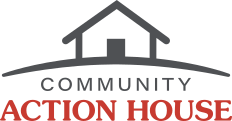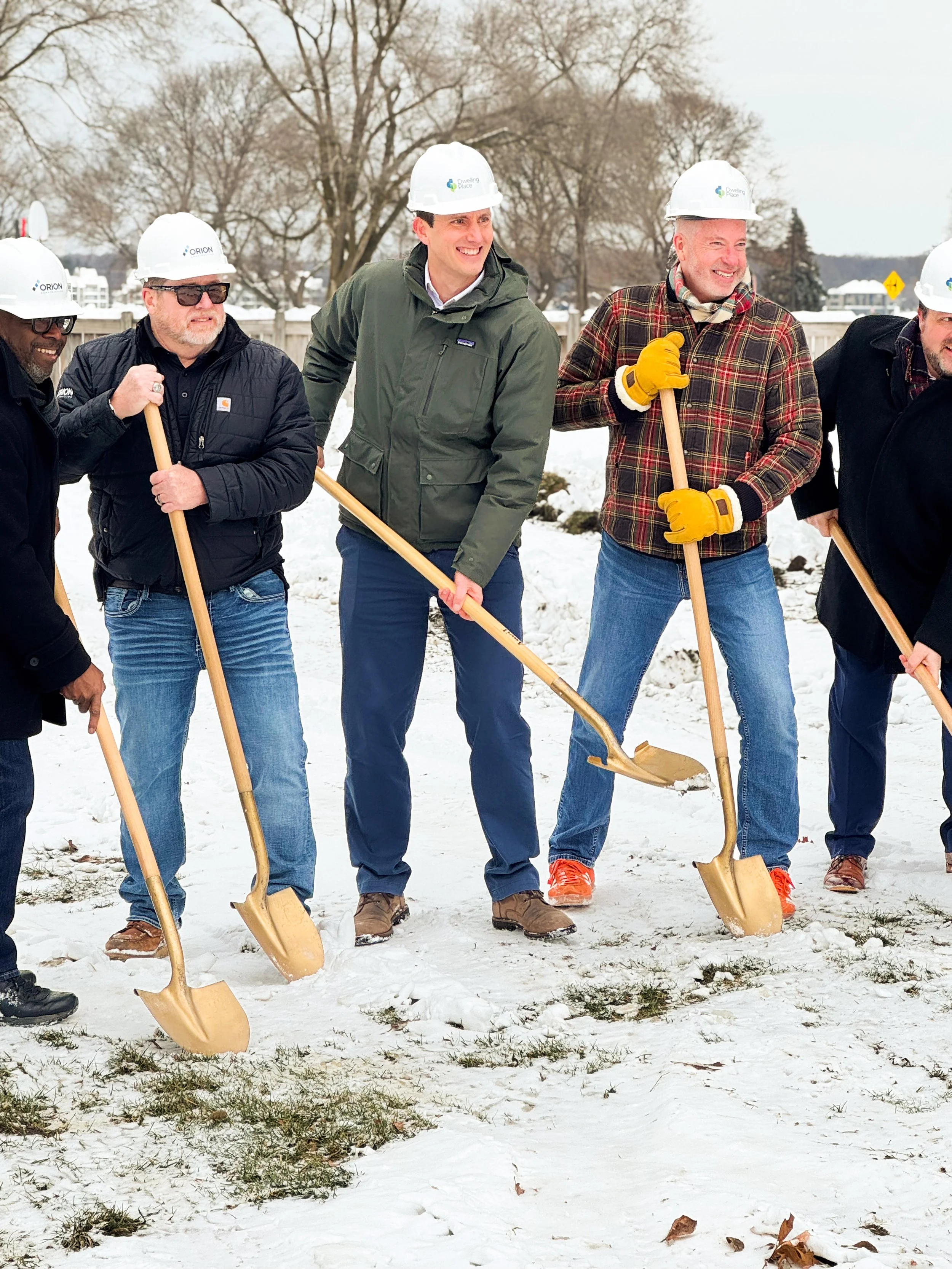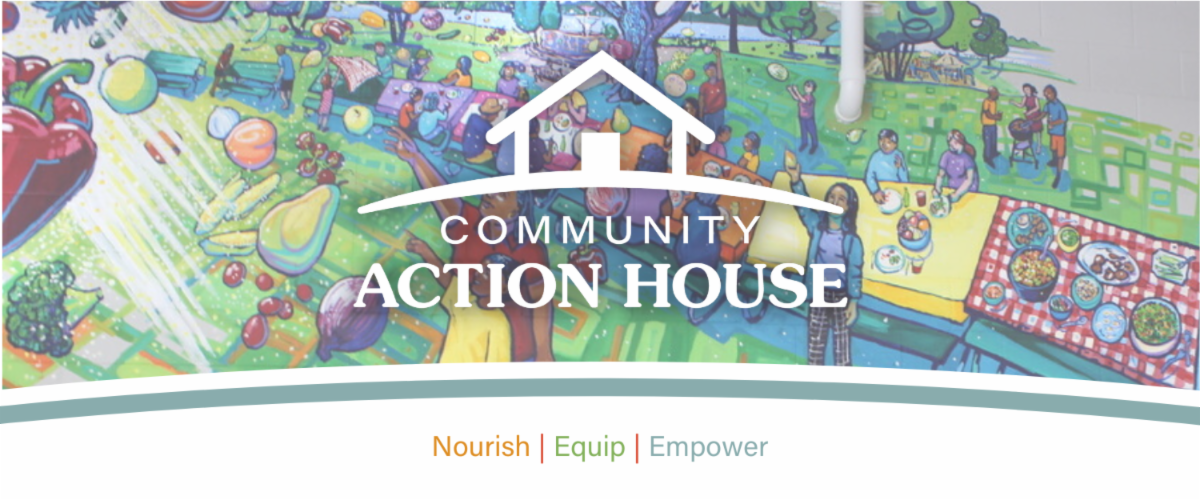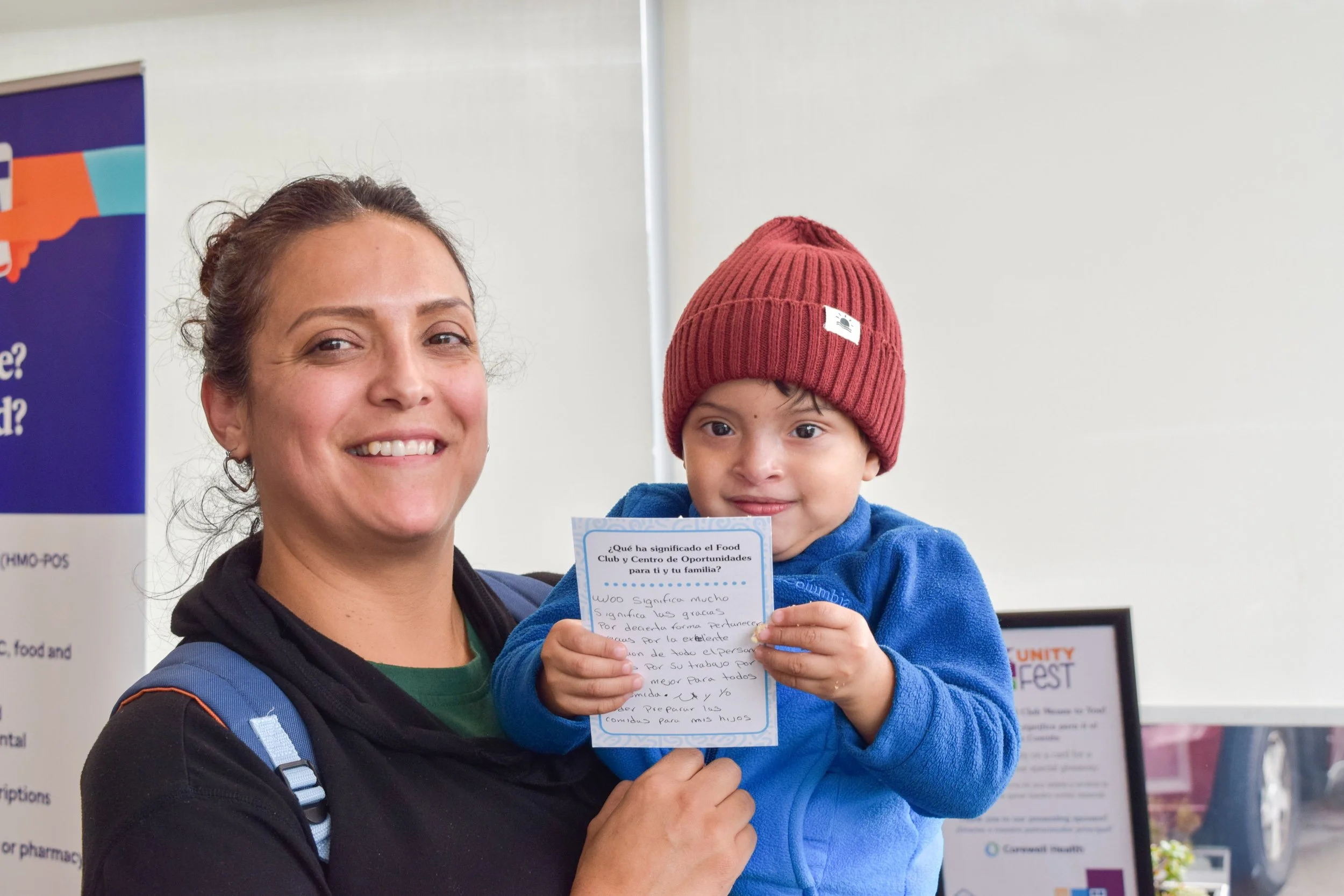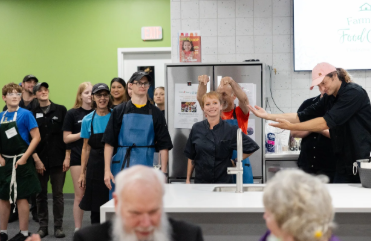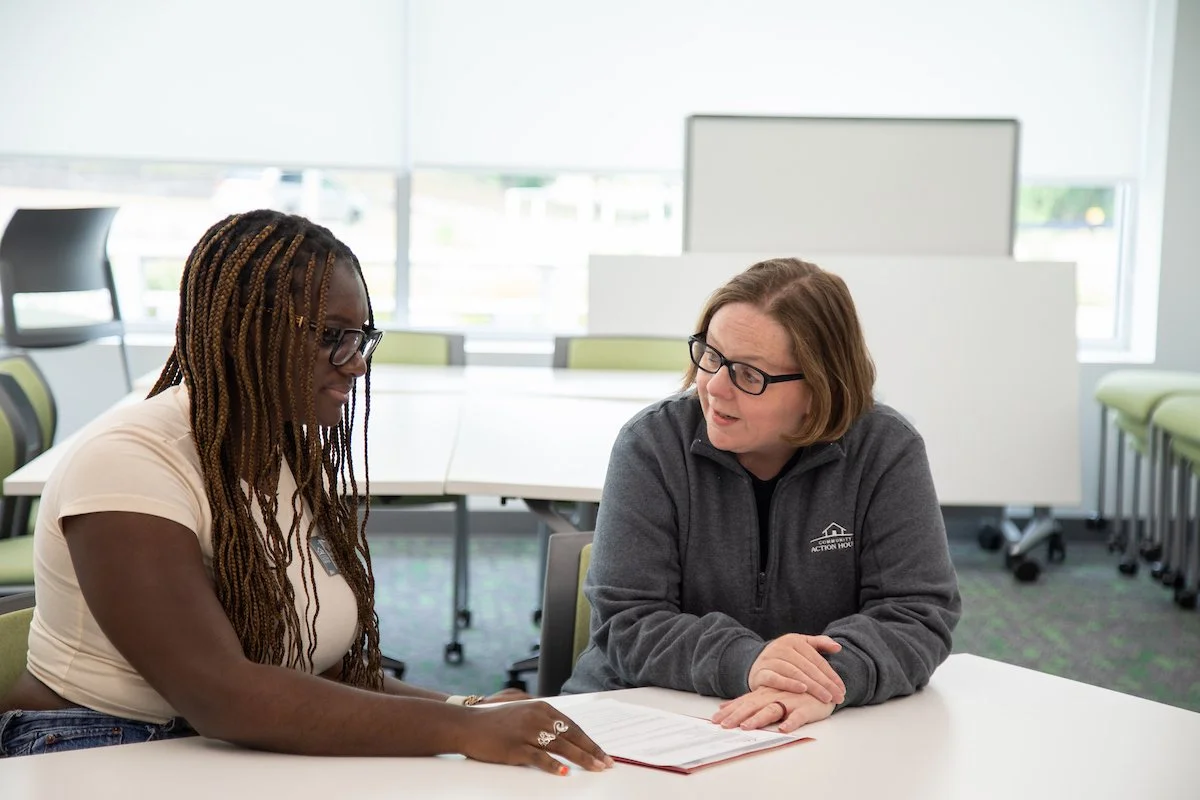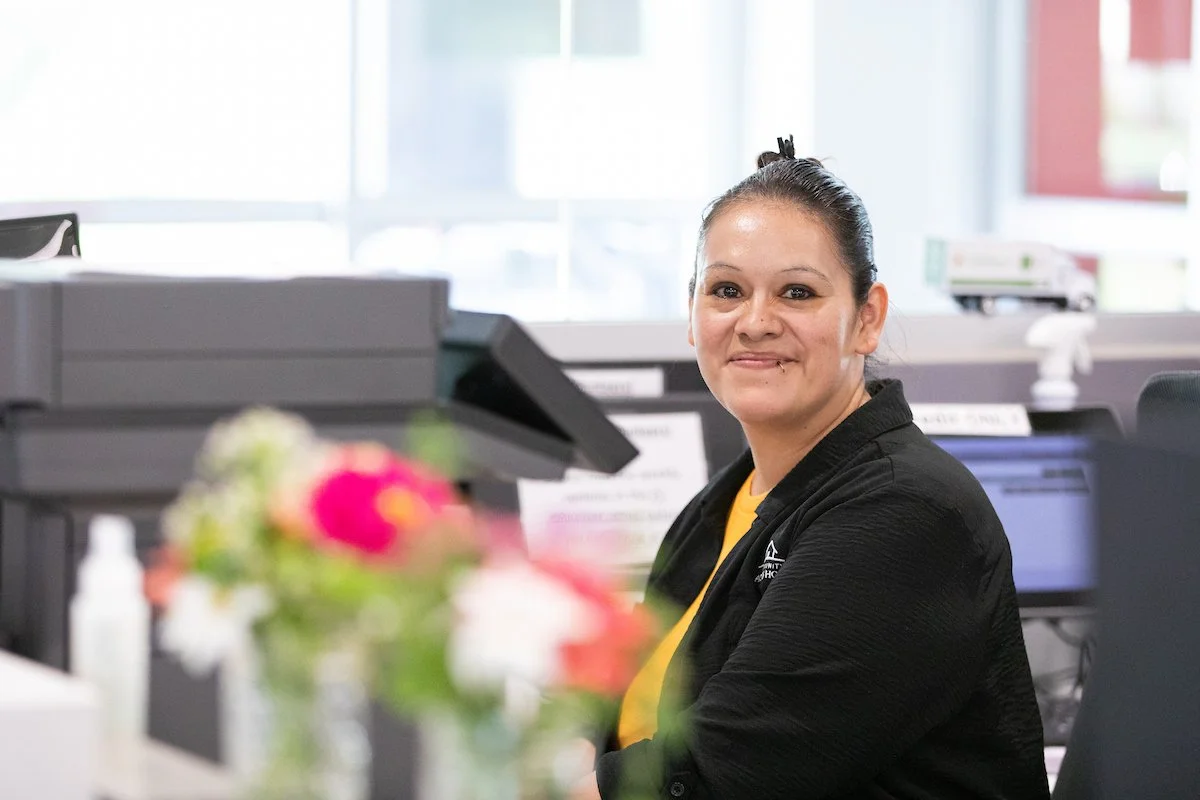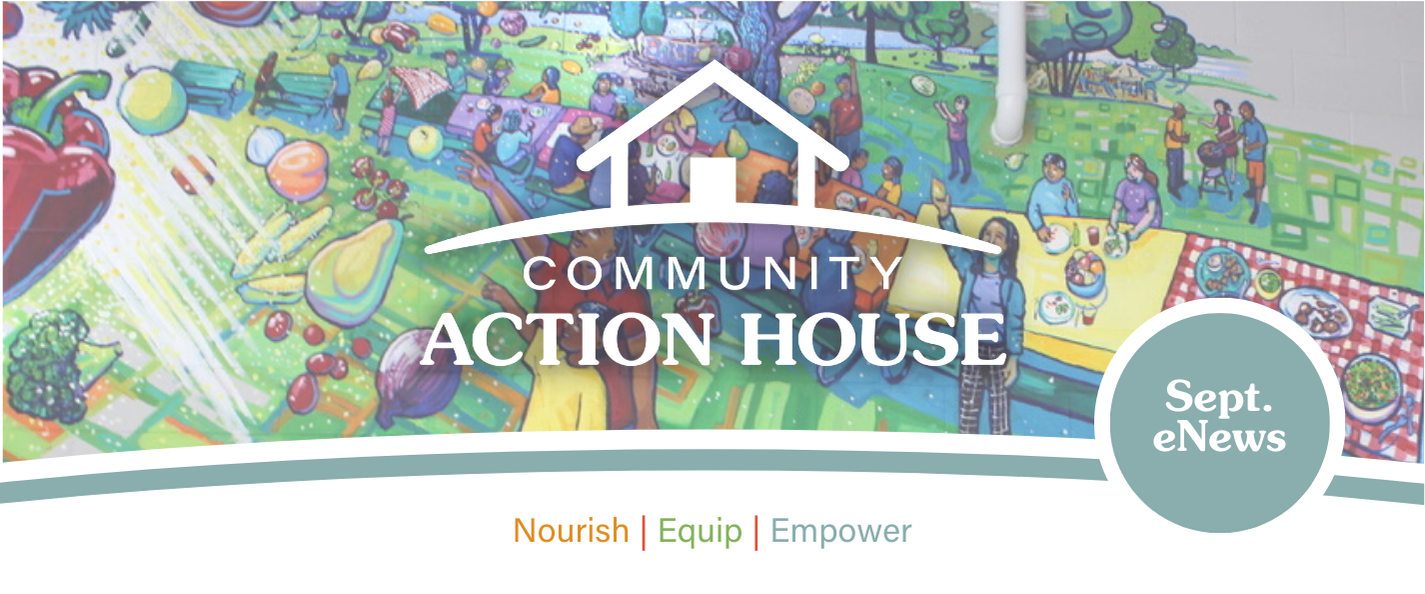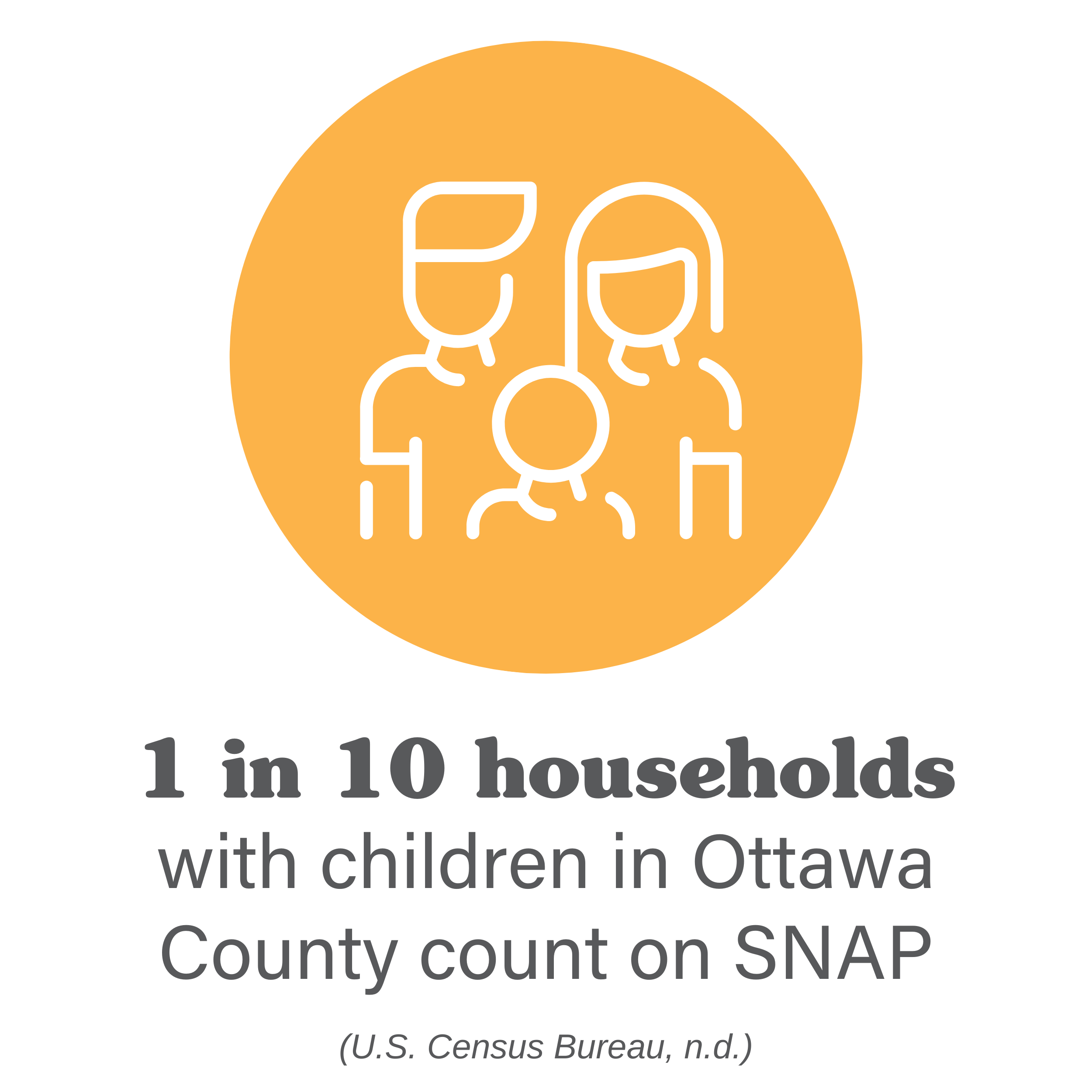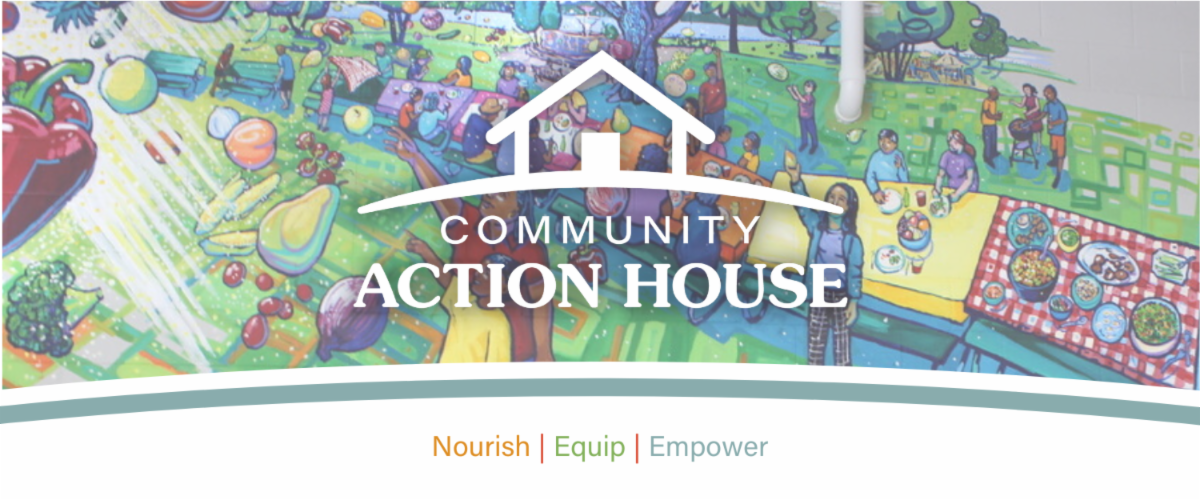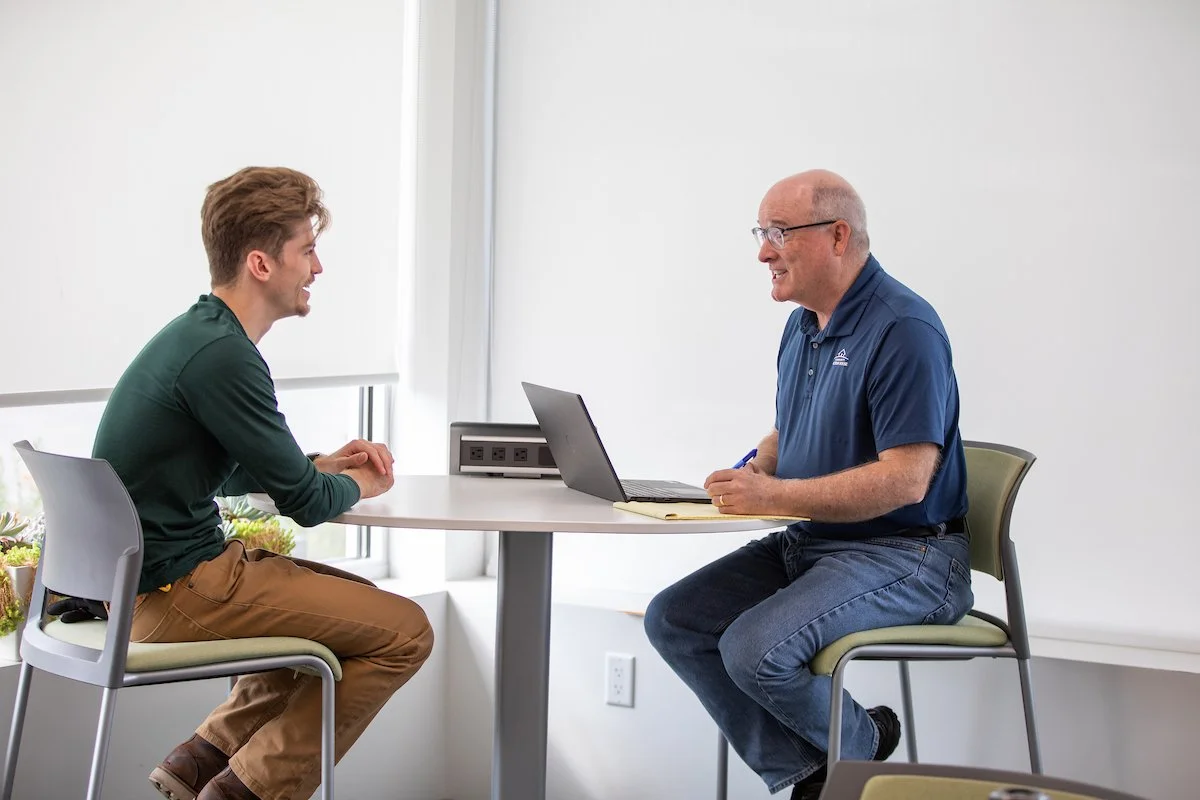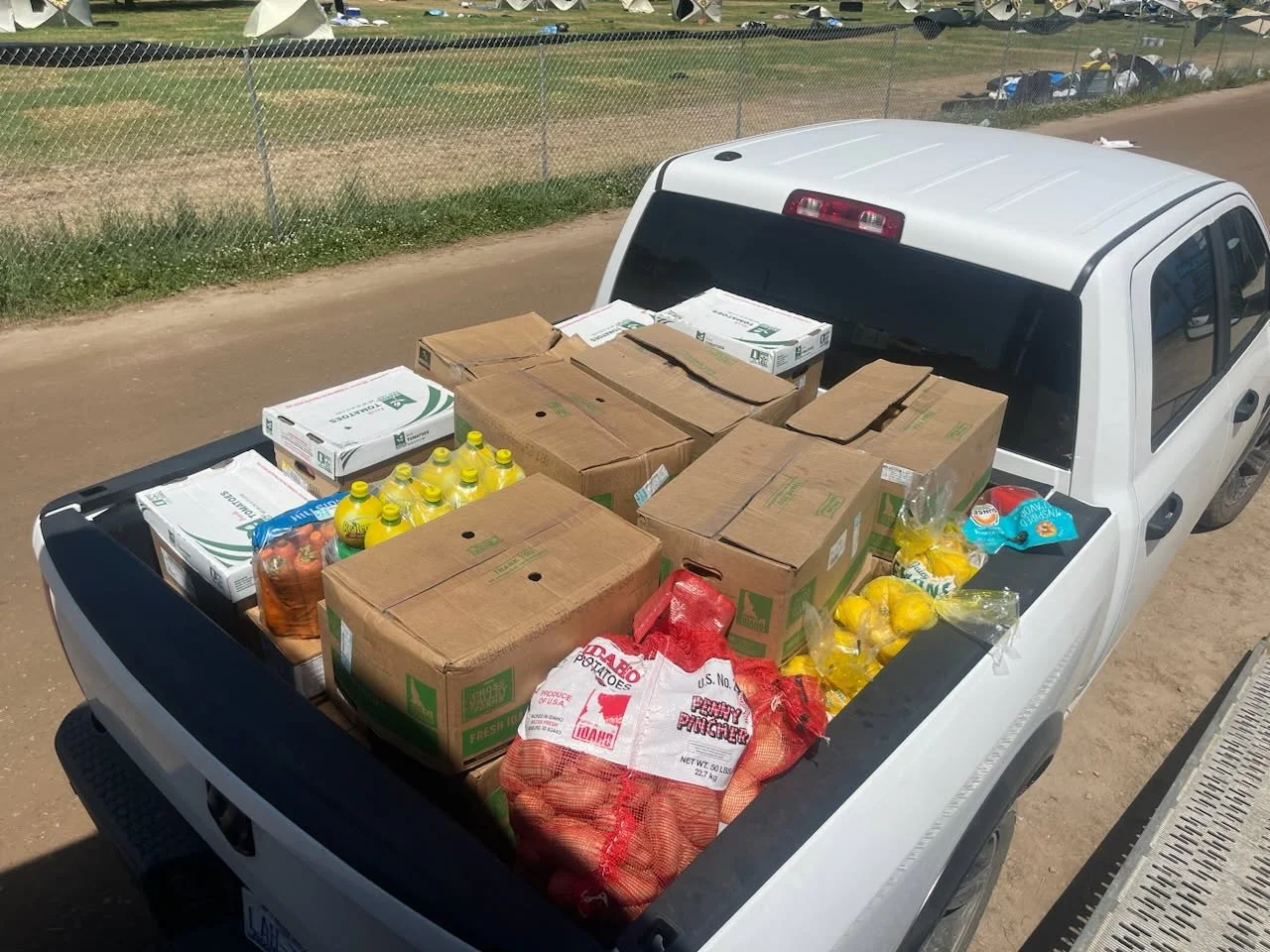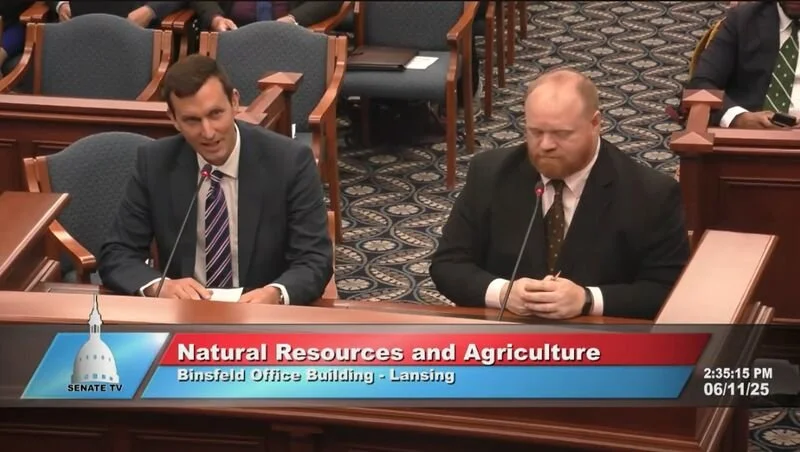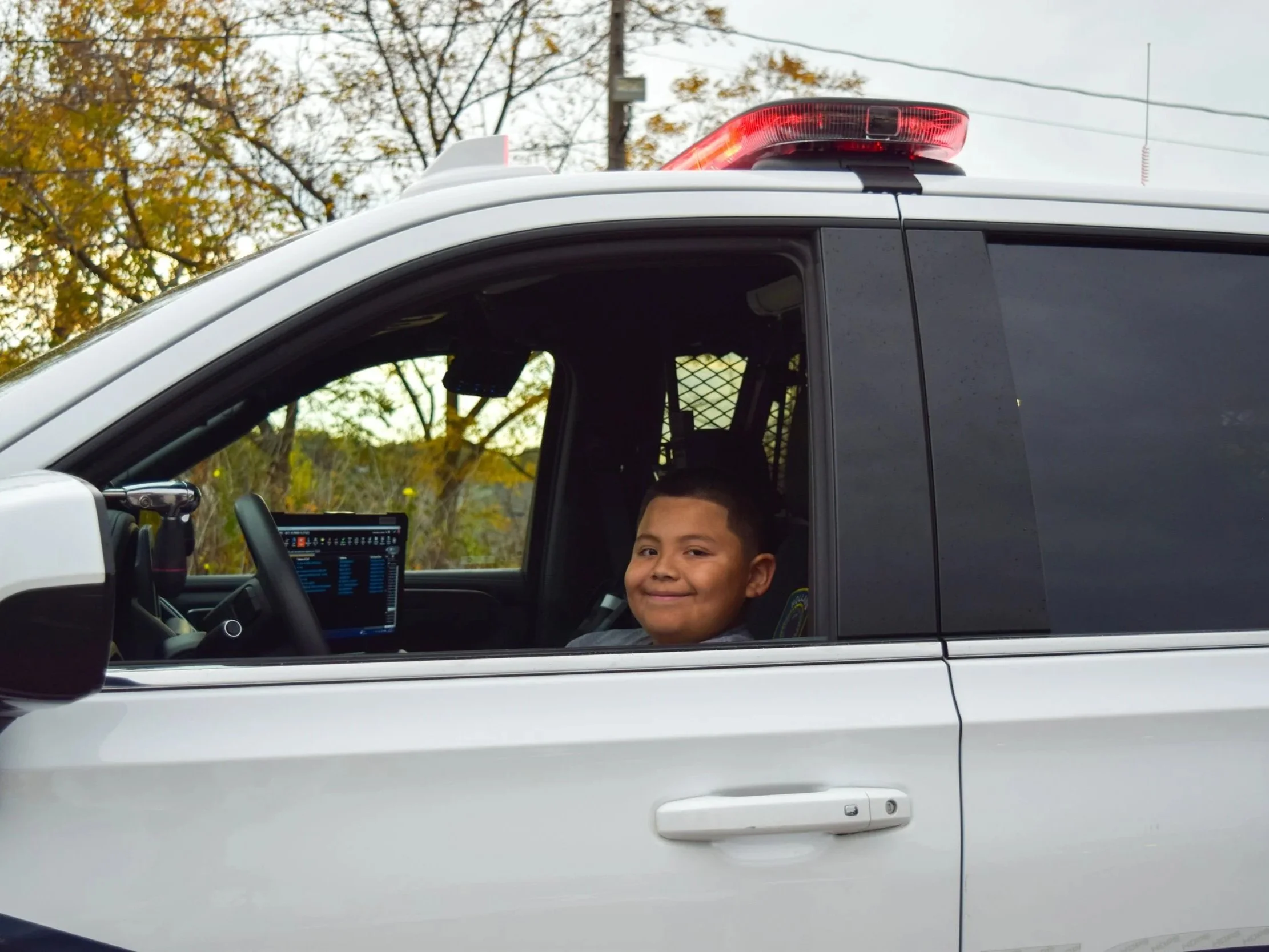Program Updates
Food Club
Two years ago, Aaron* became a Food Club member. Retired and living on a fixed income, he saw his budget grow tighter as grocery prices soared. He turned to Food Club to access the fresh, healthy food he needed to thrive.
Since becoming a member, Aaron has found joy and confidence in cooking. With access to fresh produce that used to be out of reach, he’s explored new vegetables and healthier meals. Today, he’s cooking more often, feeling better, and proudly shared that his blood pressure has gone down—something he hadn’t thought possible just a few years ago.
Aaron hopes to one day no longer count on Food Club, but for now, he’s grateful to have it as a steady safety net, sharing “If there’s a month where something unexpected throws off my budget, I know I can turn to Food Club.”
*Name and photo changed for privacy
Outreach & Housing Access
Earlier this year, Anna* and her children were living out of their car. After an unexpected cut in work hours and no financial safety net, they lost their housing. Despite the challenge, Anna continued to work, care for her children, and hold on to hope for a brighter future.
When she connected with our team, we began helping her gather paperwork and partnered with Good Samaritan to identify housing leads. Together, we helped her apply for the Housing Choice Voucher program—a vital resource for families experiencing homelessness.
This fall, Anna received incredible news: her family was selected to receive a Housing Choice Voucher—one of only 14 awarded in Ottawa County. After receiving the voucher, Anna began reaching out directly to private landlords, submitting applications, and doing it all while still working and parenting.
Her determination paid off. A landlord accepted her application and voucher, and Anna’s family finally moved into a safe, stable home! To help them settle in, our team provided a Food Club membership, a Resale Store voucher, a referral to Community Mental Health, and a connection to a local church offering hygiene and cleaning supplies. It takes a community working together to ensure families have access to the resources they need to build a brighter future. We’re deeply grateful for all of the agencies and community members who are committed to strengthening how we show up for families like Anna’s, together.
*Name and photo changed for privacy
Community Kitchen
When Greg* first walked through our doors, he was carrying the weight of uncertainty. He had just lost his job, then his housing, and was trying to meet his most basic needs without a safety net. Like many of our neighbors, Greg came to the Community Kitchen looking for a hot meal.
Over time, he began building relationships with our team—connections rooted in kindness, trust, and a shared belief that a brighter future is possible. When Greg asked our team for support, we completed the steps to verify his homelessness. This verification is often required before someone can apply for housing programs or vouchers. We continued to gather the documents Greg needed to apply for housing and connected him with Good Samaritan for support in his search.
After months of applying, Greg had a next-day appointment with a housing provider. He knew our team would be at the Community Kitchen, and when he stopped by to share the exciting news, we helped him print and walk through everything he needed to be ready.
Despite Greg’s hard work preparing for the appointment, he’s still looking for an apartment. The process of finding housing often looks like this—a step forward, then a new challenge. As Greg continues to look for housing, he knows he can turn to our team, finding encouragement and expertise so he doesn’t have to navigate a complex system alone.
*Name and photo changed for privacy
Financial Wellness
Earlier this year, Jane* came to Community Action House with just seven days away from eviction. As the primary provider for her family, an unexpected job loss had made it impossible to keep up with rent. More than anything, Jane wanted to keep her children safe and housed. She connected with our Financial Wellness team, who immediately jumped in to support—reaching out to her housing provider to explain her circumstances, updating paperwork, and exploring every available support option.
Through our connection, a generous church partner offered to provide funding that helped Jane cover two months of missed rent—bringing her current with her housing provider and preventing eviction. This financial cushion gave her the stability she needed to pause, catch her breath, and begin taking steps toward a stronger financial future.
For Jane and her family, a challenge that could have quickly become a crisis instead became a turning point—thanks to a wave of collaboration. This outcome reflects the power of trusted relationships: with community partners, understanding landlords, and most importantly, the neighbors we serve. It’s through these relationships that progress becomes possible, and neighbors get the support they need to build a brighter future.
*Name and photo changed for privacy
Lakeshore Food Rescue
When SNAP benefits were suddenly paused, we knew the impact would be immediate for many of our neighbors. Thanks to strong partnerships through Lakeshore Food Rescue, we were able to act quickly—scaling up fresh food purchasing and securing six pallets of corn and five pallets of tomatoes at low cost, just as more families were walking through our doors. This kind of response isn’t possible in every community. It’s the result of years of intentional collaboration alongside dedicated partners and volunteers to ensure our community can respond swiftly and effectively in times of increased need.
During the SNAP pause, our community showed up—powering more than 40 food drives, increasing volunteerism by 70%, and making generous financial contributions. Your support strengthened our response and together we kept our Food Club shelves stocked with fresh, healthy food during a time of challenge and uncertainty. In moments of rising need, we are so grateful for our dedicated team and a community that consistently shows up—ready to step in and support our neighbors who need it most.
Program Highlight
Breaking ground on our affordable housing project!
Last week we broke ground on our affordable housing project with Dwelling Place! This long-awaited project will add 52 new affordable rental homes in our community—creating urgently needed housing for families seeking stability.
At last week’s groundbreaking, we gathered with neighbors, city leaders, and longtime supporters at one of the project sites: our former food pantry on 14th Street. This site, where so much of our work took root, will now carry forward its legacy in a new way, providing families with safe, stable housing and a foundation for future progress.
We’re incredibly grateful to all of our partners, donors, volunteers, and supporters who are making this project possible! Together, we’re creating solutions that allow everyone to provide a strong foundation for their family, and have a safe place to call home.
Community philanthropy is playing a big part in making this housing a reality. Out of our $1.2M goal, nearly $1M has already been committed. If you or someone you know would be interested in helping close the remaining gap, we’d love to connect. All one-time investments in this campaign will help provide high-quality, affordable housing for families for the next 45+ years. Learn more and get in touch here.
Save the Date
December 21st is Homeless Persons' Memorial Day
December 21st is National Homeless Persons’ Memorial Day, the first day of winter and the longest night of the year. Across the country, communities will pause to remember those who died while experiencing homelessness in the last year.
In honor of this day, Community Action House will be co-hosting an outdoor memorial from 5:00-6:00pm on Sunday, December 21st at First United Methodist Church (57 W 10th Street), in partnership with the Lakeshore Housing Alliance. All are invited to join us for a short program beginning at 5:15, followed by time for candle lighting and reflection.
Join us for our Golf Classic!
Our Golf Classic is back on June 11, 2026 at Ravines Golf Club!
The Golf Classic brings together business leaders, community partners, and supporters for a day of friendly competition and celebrating impact. To make it easier for everyone to join, we’re offering two tee times: a morning session and an afternoon session.
Put together a team of four, or join us as a sponsor to support Community Action House programs that nourish, equip, and empower our neighbors!
Nominate Community Action House for Holland’s Community Choice Awards by December 22!
Holland’s Community Choice Awards are back!
Completely driven by public participation, the Community Choice Awards celebrate the best local businesses and nonprofits. Starting with the nomination round, neighbors like YOU can nominate your favorite businesses and organizations in more than 140 categories. In February, voting begins to determine finalists and winners.
Your voice matters! Nominate Community Action House for the Best Non-Profit, and nominate the Community Action House Resale Store for the Best Thrift Store.
In Case You Missed It
SNAP is Back!
As our community navigated the SNAP pause, one thing became clear: our community shows up. Through our community’s generosity, we could be a source of support for our neighbors.
Talk of The Town
Last month, Senior Manager of Housing Access Jessica Pressley and Director of Food Access Programs Chara Bouma-Prediger joined WHTC to share about Homelessness Awareness Month.
FOX 17: City of Holland to gain 52 mixed-income affordable housing units
In December, Action House broke ground on their affordable housing project with Dwelling Place. This long-awaited project will add 52 new affordable rental homes in our community—creating urgently needed housing for families seeking stability.
Join The Movement
Donate Monthly
Provide a stable foundation for our service each month.
Volunteer
Volunteer your time and talent to build a stronger community.
Donate to Resale
Donate gently used items to the Resale Store and get $5 off your next purchase.
